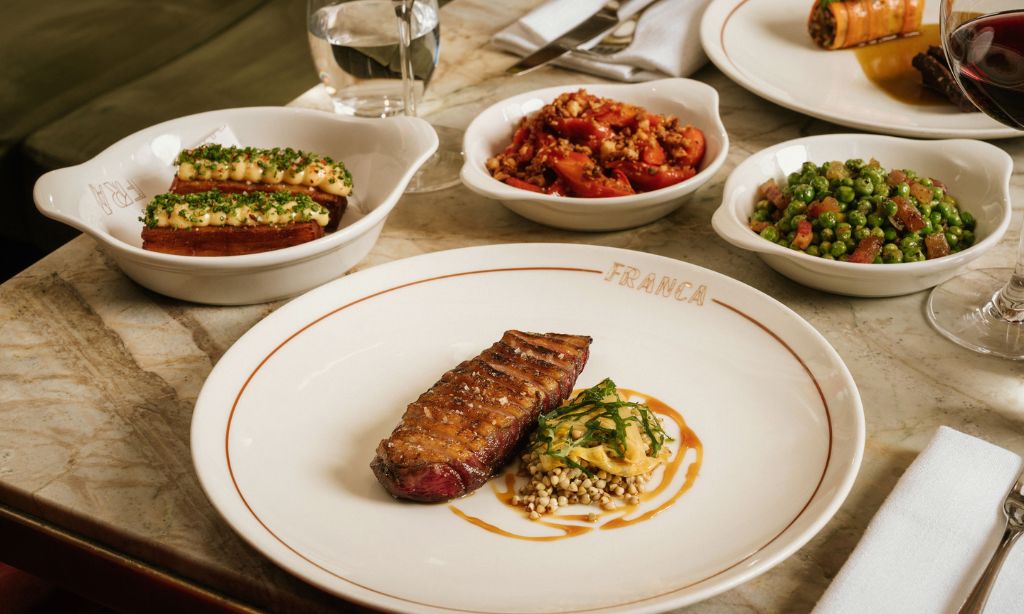Recently a brand manager for a German restaurant in Melbourne told me the biggest challenge he thought the cuisine faces in Australia. He said it’s a challenge many overseas German restaurants face: their price points relative to their perceived value.
“Consumers are fine to pay big dollars for other cuisines like French or Italian,” Philipp Hockenberger, brand manager at Hofbrauhaus, said. “But German cuisine is perceived as a more basic cuisine and people aren’t willing to pay a lot for it. That makes the market for German restaurants quite unattractive for many owners.”
It got me thinking: why are some cuisines in Australia considered more ‘expensive’ than others? And how true are those reputations? To answer those questions we need to look at a few elements: costs of labour and ingredients, how hard the food is to prepare, dining experiences and public perception of the cuisines.
“Labour and labour costs form such a central part of the delivery of a dish and some cuisines are simply more labour-intensive than others to execute consistently,” says Geraint Coles, group general manager of Franca, Armorica, Parlar and Pelicano. “Prices are legitimately higher for this reason.”
Ingredients also play a major role. If a cuisine uses ingredients expensive in Australia that can lead to higher restaurant prices. Some cuisines like Thai rely on locally sourced, relatively inexpensive ingredients so it’s easier to offer dishes at lower prices, says Jomel Santos, executive chef of Sydney Italian restaurant Antica Dining. “Cuisines with simple dishes that can be served fast are often more affordable,” Santos says.
Coles says he doesn’t think French food’s reputation in Sydney is expensive but instead higher quality. He also says some cuisines are more suited to casual dining and others suit special occasions when we’re more likely to fork out more for a meal which could play into why consider some to be more ‘expensive’.
Generally, cuisines with many Michelin stars are considered more expensive, points out Wanaka Teramoto, restaurant manager at Japanese restaurant Kuro in Sydney. As of writing this, the countries with the highest number of Michelin-starred restaurants currently are France (636), Japan (387) and Italy (381). Teramoto also says the dishes Australians associate with a cuisine play a role.
“For example Singaporean food in Sydney is thought of as Hainanese chicken rice and laksa which are street food so the cuisine has a cheaper image,” she says. “This is compared to French food that is confit duck and beef tartare which is considered more expensive.”
Teramoto adds that Japanese food in Australia is generally more expensive than in Japan, likely due to higher labour costs. That said the price points of Japanese eateries in Australia vary greatly. You can get sushi from a food court counter for $5 a roll or at an omakase restaurant as part of a $380 per person meal.
Joel Best, the Australian owner of Japanese Sydney restaurant Besuto Omakase, agrees with the varying price points of Japanese food here, pointing out that ramen can also be $10 or $50. He also points out some nice restaurants in Sydney serve burgers for $30 but you could get one from Maccas next door for $10.
Italian is another cuisine with varied prices in Australia, says Santos. It’s expensive at fine dining restaurants that use premium ingredients and imported products but also affordable at casual pizzerias and pasta bars.
“Dishes at high-end Italian restaurants are intricate and require more time and skill to prepare especially if they’re a regional Italian dish,” Santos says. “This level of skill and knowledge within your kitchen team then affects your labour costs which are reflected on your menu pricing.”
After living in the US for some time, Coles says he noticed a difference in our approach to dining than Americans’. He says there is an openness to trying new things there that’s less prevalent here. “People tend to have an idea of a particular cuisine as being one thing which limits the opportunity for people to drive a cuisine in a new direction,” he says.
Some cuisines in Australia don’t have as varied prices or reputations. Best says he thinks of Thai cuisine in Australia as generally more affordable, though it can be pricier at fine diners like Sydney’s Long Chim. “But it’s hard to get people to pay for Thai at a higher price when they know a dish costs $2 in Bangkok,” he says.
My take? Many cuisines in Australia like Japanese and Italian have varied prices. French and Thai are two of the few that seem to have consistent price points — and value perceptions.
In Australia, diners have more options for trying different cuisines — depending on our budget and preferences — than we might realise. For cuisines we might associate with being more affordable, we need to understand that if it’s served at a more expensive price point, it’s likely the dishes have better quality ingredients and are harder to make and that the dining atmosphere will also be more special.
Hockenberger told me all schnitzels at Hofbrauhaus are crumbed to order. The restaurant has chefs doing nothing but crumbing schnitzel all night. That sounds better than the chicken schnitties you’d get at your local pub. Our value perceptions need to be more malleable. Branding and marketing can help with this.
Without an openness to trying new foods and versions at different price points, it’ll be hard for chefs here to keep challenging traditional perceptions of certain cuisines. We need that to keep happening so Australia’s dining scene can continue to evolve. No one wants a stale dining scene.
Related: The Flavourful Mexican Dish Taking Australia By Storm
Related: Could This French Dish Created By Monks Go Mainstream?
Read more stories from The Latch and subscribe to our email newsletter.

